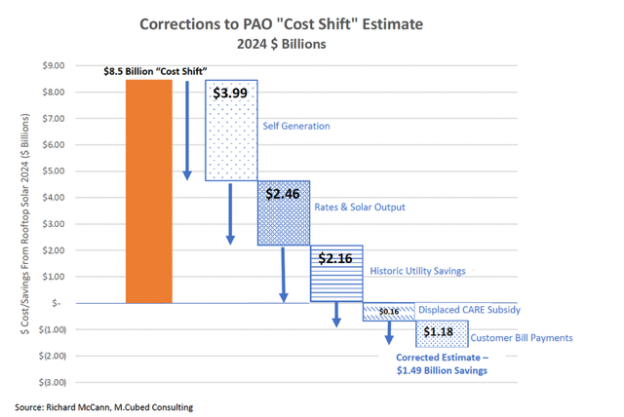
May 23, 2025


California leadership continues to find new ways to devalue home solar. The California Assembly Appropriations Committee voted to pass AB 942, which will break existing solar contracts when homeowners sell their homes.
“The agreement language that every solar user signs is abundantly clear that the 20 year net metering terms are attached to the solar system and not the property owner,” explains California Solar & Storage Association (CALSSA executive director Brad Heavner. “Reducing net metering compensation when homes are sold or transferred means solar users – who are mostly middle and working class households – would no longer be able to capture the value of their solar investment when their property is sold.”
The Appropriations Committee also took the unusual step of claiming AB 942 has no fiscal impact, which allows the bill to bypass the usual process for passing legislation with budget impacts.
“Rushing this bill through the legislative process only highlights how unpopular it is with the public,” Heavner added. “Californians deserve a transparent debate on proposals that would undermine property rights, reduce home values, and jeopardize the state’s clean energy future. Instead, AB 942’s backers are pushing it forward at an unusual pace, hoping to silence the voices of millions of solar users and concerned citizens.”
A broad coalition of more than 100 environmental, climate, clean energy, consumer, economic justice and affordable housing advocates signed a letter calling on California legislators to reject AB 942. AB 942 is also opposed by the California Association of Realtors, the California Building Industry Association, and Los Angeles Business Council.
NEM 2 no more?
Solar PV financed by a loan boosts home value. Altering that value post-sale is a big deal, especially in California. The difference in the value of solar between California’s current net billing structure (NEM 3), and previous net metering agreements is vast. Most solar systems installed under NEM 3 now include a battery in order to make economic sense. Safe to assume many of these home PV systems will not also have a battery.
“This vote sent a very clear message to the residential solar industry from the state of California,” stated Fox Swim, senior solar industry researcher, Aurora Solar. “Despite the fact that incentives for solar panels are very popular across all political parties, the California assembly is willing to consider not only further slashing those incentives but allowing investor-owned utilities to break existing legal contracts to meet its desired end.”
Heavner also believes this will generally cause serious confusion during a real estate transaction.
“An amended, AB 942 would be unworkable in practice, putting utilities in the position of verifying real estate transactions. It would cause notable confusion in situations where property changes hands after death or a divorce, when owners change names, for rental and commercial properties, for third-party ownership, or for solar systems that are financed through a loan or leased.”
Cost shift argument debunked
The impetus of using AB 942 (authored by a former utility executive) to break these utility contracts with homeowners, according to backers, is to lower energy rates. This assertion doesn’t seem to hold water. According to CALSSA research, grid spending increased 130 to 260 percent over the past 8 to 12 years, directly correlating with rate increases.
By contrast, research by M.Cubed shows that solar users saved all energy consumers $1.5 billion in 2024 due to decreased load on the grid and other shared benefits.
The California Public Utilities Commission’s (CPUC) Public Advocates Office (PAO) issued in August 2024 an analysis that purported to show current rooftop solar customers are causing a “cost shift” onto non-solar customers amounting to $8.5 billion in 2024. Unfortunately, this rather simplistic analysis started from an incorrect base and left out significant contributions, many of which are unique to rooftop solar, made to the utilities’ systems and benefitting all ratepayers. After incorporating this more accurate accounting of benefits, the data (presented in the chart above) shows that rooftop solar customers will in fact save other ratepayers approximately $1.5 billion in 2024.
Here is a chart summarizing M.Cubed’s revisions to PAO’s math. Click it to read their analysis:
Tags: California, CALSSA
Source link


